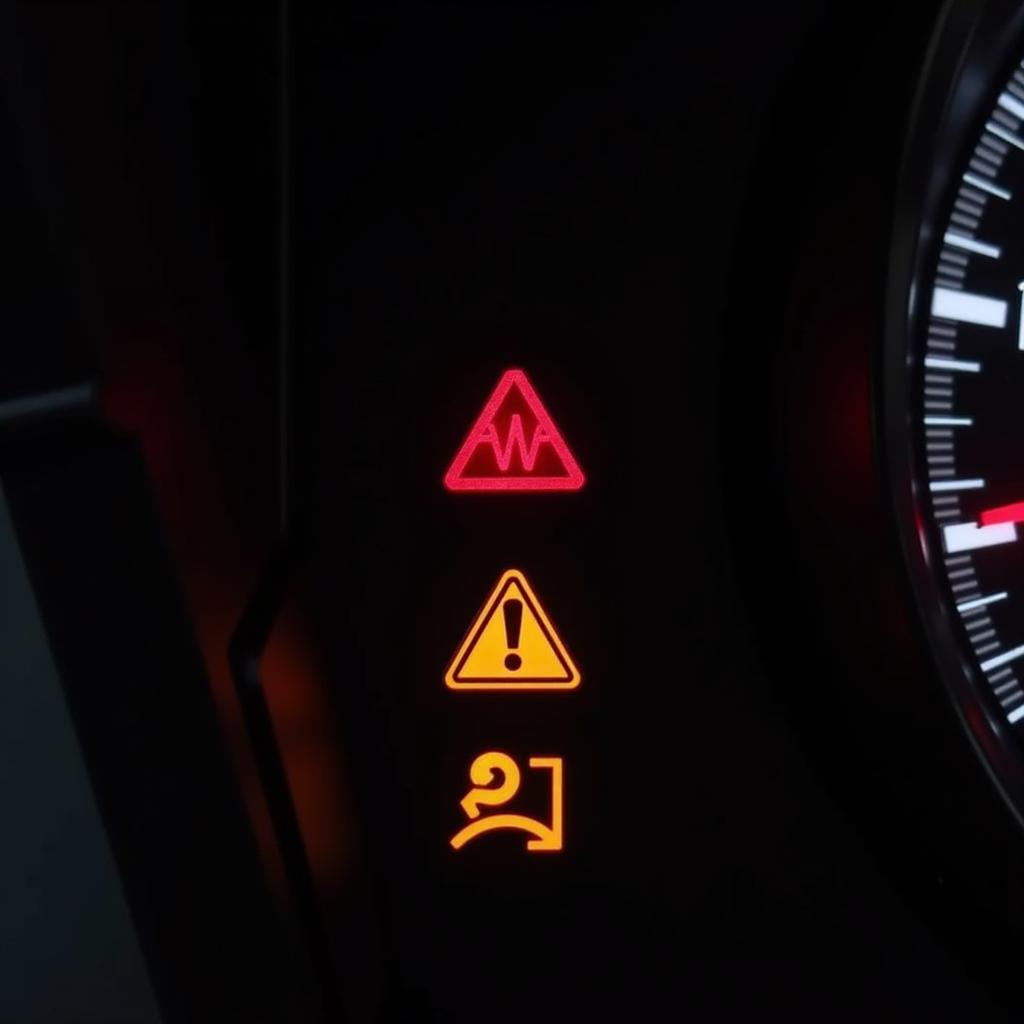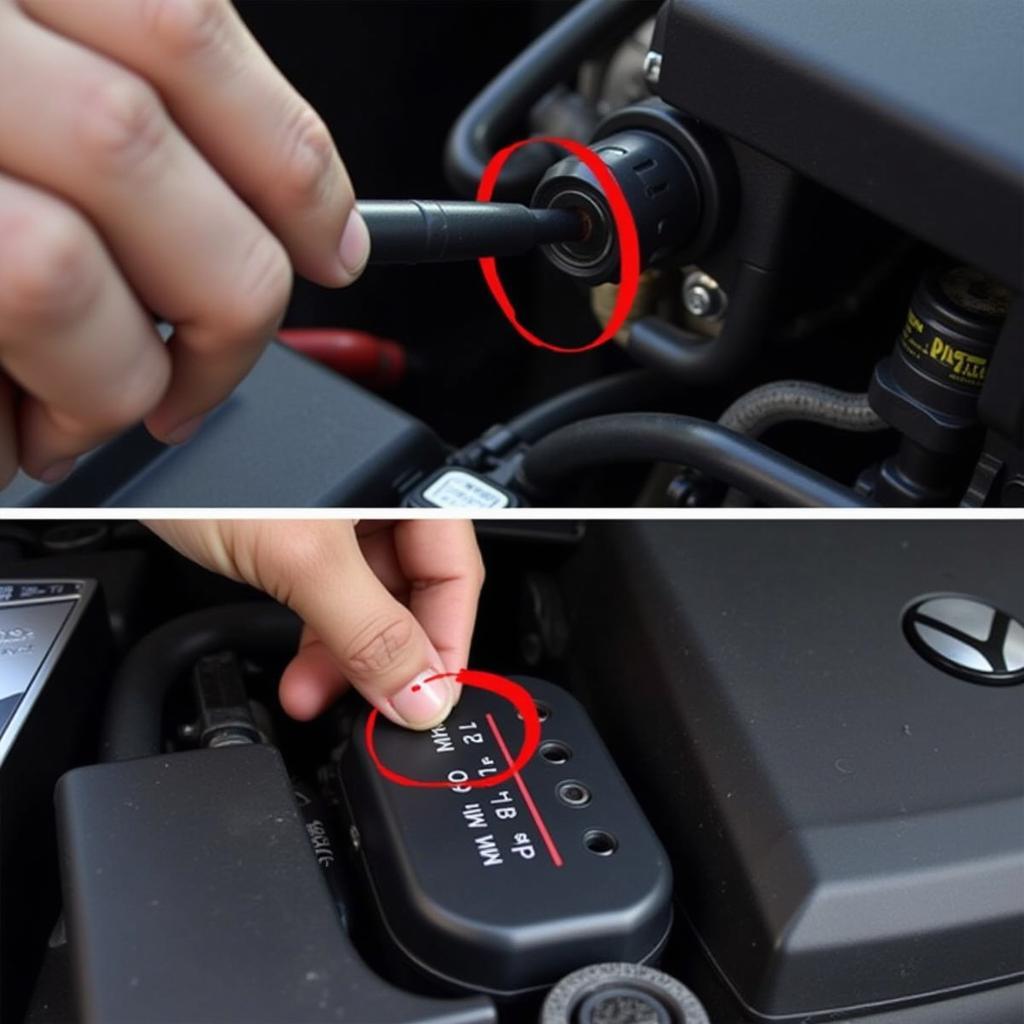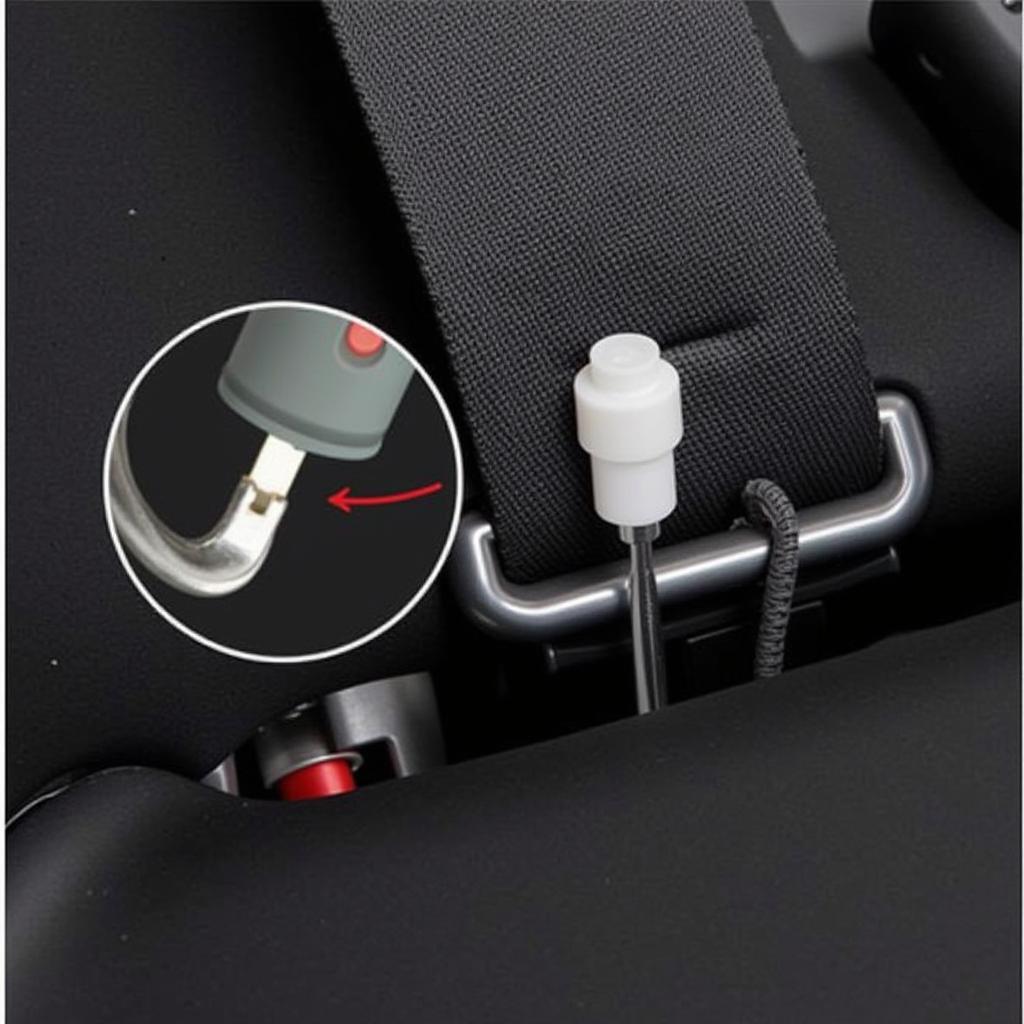Experiencing brake warning lights on your VW Golf TDI? It’s crucial to address these warnings immediately, as they signify potential issues with your vehicle’s braking system, a critical safety component. This comprehensive guide delves into the common causes of brake warning lights on VW Golf TDI models and provides a structured approach to help you troubleshoot and potentially resolve the issue.
Understanding Your VW Golf TDI’s Brake Warning System
Your VW Golf TDI is equipped with a sophisticated electronic brake system designed to prioritize your safety. The brake warning lights on your dashboard serve as your car’s communication tool, alerting you to potential problems. Let’s decode these warning lights:
Common Brake Warning Lights
- Red Brake Warning Light: This light typically indicates one of two major issues:
- Low Brake Fluid Level: This is the most common culprit. A leak in the brake system can lead to a drop in brake fluid, compromising braking efficiency.
- Serious Hydraulic Failure: A fault within the hydraulic system, such as a malfunctioning master cylinder, can trigger this warning light.
- Amber ABS Warning Light: This light signals a problem with your Anti-lock Braking System (ABS). While your primary braking system might still function, the ABS, designed to prevent wheel lockup during braking, may be deactivated.
- Electronic Parking Brake (EPB) Light: If this light remains illuminated or flashes, it could indicate an issue with your electronic parking brake system.
 VW Golf TDI Dashboard Brake Warning Lights
VW Golf TDI Dashboard Brake Warning Lights
Troubleshooting Brake Warning Lights on Your VW Golf TDI
While it’s recommended to consult a qualified mechanic for a thorough inspection, here’s a step-by-step guide to help you troubleshoot basic issues:
- Check Your Owner’s Manual: Your VW Golf TDI owner’s manual is your go-to resource for understanding the specific warning lights and their corresponding meanings for your model year.
- Inspect Brake Fluid Level: Park your vehicle on a level surface and locate the brake fluid reservoir under the hood. The reservoir will have a “Min” and “Max” marking. If the fluid level is below the “Min” mark, add the recommended brake fluid type specified in your owner’s manual.
- Inspect for Visible Leaks: Carefully examine the area around the brake fluid reservoir, brake lines, and near the wheels for any signs of fluid leaks.
- Check Your Parking Brake: Ensure your parking brake is fully disengaged. Sometimes, an improperly released parking brake can trigger a warning light.
- Scan for Diagnostic Trouble Codes (DTCs): If the warning lights persist, you can use an OBD-II scanner to retrieve diagnostic trouble codes stored in your car’s computer. These codes can provide more specific insights into the underlying problem.
 Checking Brake Fluid Level on a VW Golf TDI
Checking Brake Fluid Level on a VW Golf TDI
When to Seek Professional Help
If the warning lights persist after basic troubleshooting, it’s crucial to seek professional assistance. Issues such as faulty ABS sensors, brake line problems, or malfunctioning calipers require specialized tools and expertise.
“Attempting to repair complex brake system issues without the proper knowledge and tools can be dangerous,” cautions master mechanic, Johnathan Miller. “It’s always best to err on the side of caution and consult a qualified professional for any brake-related concerns.”
 Mechanic Inspecting VW Golf TDI Brakes
Mechanic Inspecting VW Golf TDI Brakes
Preventing Brake Warning Lights
- Regular Maintenance: Adhere to the recommended maintenance schedule outlined in your owner’s manual, including brake fluid flushes and brake pad replacements.
- Quality Parts: When replacing brake components, use high-quality parts from reputable brands to ensure optimal performance and longevity.
- Driving Habits: Aggressive driving habits, such as hard braking, can accelerate brake wear and tear.
Conclusion
Addressing brake warning lights on your VW Golf TDI promptly is paramount for your safety and the well-being of your vehicle. While this guide provides initial troubleshooting steps, remember that professional diagnosis and repair are essential for ensuring your braking system functions flawlessly. By understanding your car’s warning signals and taking proactive measures, you can contribute to a safer and more enjoyable driving experience.

